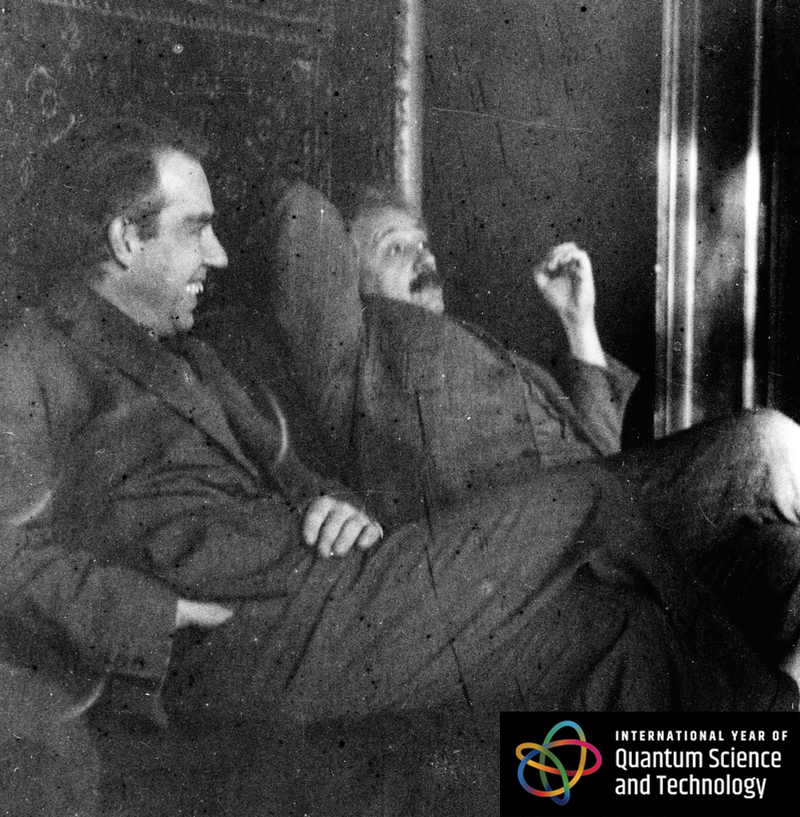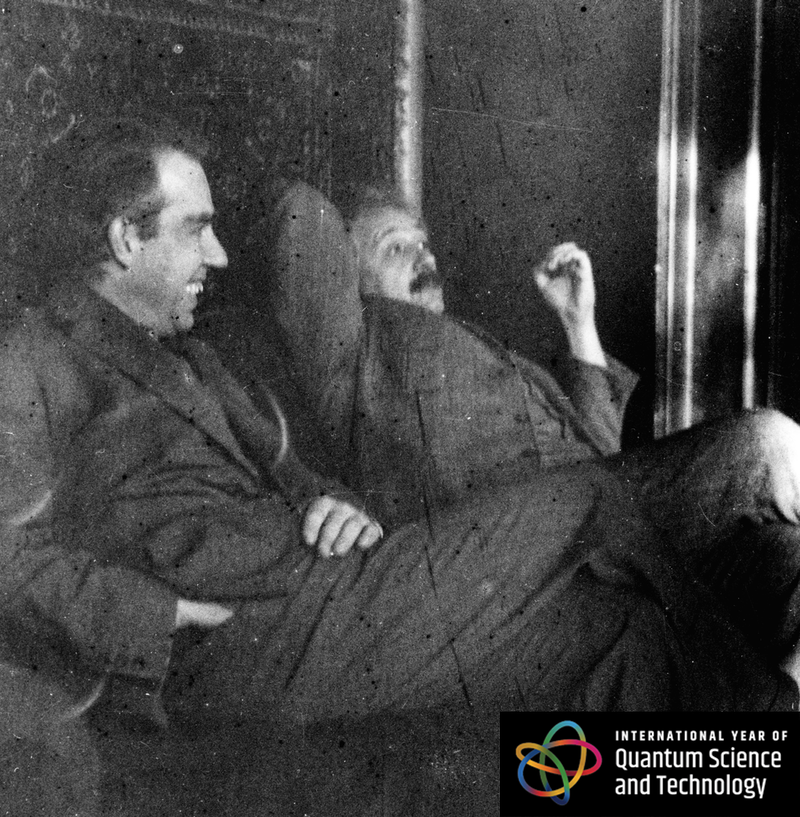Quantum Milestones, 1935: What’s Wrong with Quantum Mechanics?
For the International Year of Quantum Science and Technology, we are republishing stories on the history of quantum physics from the archives of Physics Magazine and APS News. The original version of this story was published in Physics Magazine on September 23, 2005.
Albert Einstein never really liked quantum mechanics. In 1935, he and two colleagues argued in the Physical Review that the theory was missing something essential [1]. They described an imaginary experiment in which measurements of one particle revealed information about another particle without measuring the second one directly. They claimed that the possibility of such an experiment contradicted a basic tenet of standard quantum theory. Although the argument was essentially disproved later, it still leaves difficult questions unresolved, if largely ignored, by most working physicists.
Before the 1920s, physicists took it for granted that physical objects possess definite properties that suitable observations can reveal. But according to quantum principles, a measurement of some property—a particle’s momentum, say—can yield a range of possible results with varying probabilities.
In the so-called Copenhagen interpretation of quantum mechanics, spearheaded by Niels Bohr of the Institute for Theoretical Physics in Denmark, properties such as the momentum of a quantum particle have no definite value until a measurement is made. Emblematic of this idea is Werner Heisenberg’s famous uncertainty principle of 1927, which said that measurement of a particle’s momentum limits the ability to find out its position, and vice versa. Many other pairs of observable quantities are governed by the uncertainty principle.
Einstein, Boris Podolsky, and Nathan Rosen, of the Institute for Advanced Study in Princeton, New Jersey, argued that this thinking leads to inconsistency. They imagined creating a pair of particles speeding away from each other but with correlated properties—a position or momentum measurement on one particle would immediately tell you the position or momentum of the other.
They pointed out that an experimenter could choose to find either the position or the momentum of the first particle—without doing anything to it—by observing the second. This could only mean that the first particle had definite values of both properties all along, because either property could be precisely inferred without any physical action being performed on that particle. The Copenhagen interpretation, by contrast, seemed to say that the second particle’s properties would only become definite after the first particle had been measured, even though the two particles were no longer in contact.
EPR—as the authors became known—concluded that quantum mechanics was incomplete because it didn’t allow the particles to have definite position and momentum at the same time. In his reply a few months later, Bohr argued that since you couldn’t physically perform a simultaneous measurement of position and momentum, there is no way to prove that they coexist as definite properties [2]. Einstein found Bohr’s reply unconvincing, since it carefully avoided any attempt to say what was going on behind the scenes.
The EPR claim appeared impossible to test decisively until 1964, when John Bell of CERN in Switzerland showed theoretically that a statistical test with an EPR-like experiment could quantitatively compare predictions made by quantum mechanics with those of EPR [3]. Such experiments were technically demanding, but analyses of polarization measurements of many photon pairs, published in 1981–82, convincingly showed that quantum mechanics got it right [4].
EPR used “unequivocally good reasoning,” says quantum theorist Abner Shimony of Boston College. The flaw is that quantum mechanics has an element of non-locality—a subtle connection between the two particles that persists even after they separate. But Bohr as much as Einstein, Shimony believes, would not have welcomed nonlocality, whose implications for our understanding of the fundamental nature of the physical world remain obscure.
–David Lindley
David Lindley is a freelance science writer, now retired. His most recent book is The Dream Universe: How Fundamental Physics Lost Its Way (Penguin Random House, 2020).
References
- A. Einstein et al., “Can quantum-mechanical description of physical reality be considered complete?” Phys. Rev. 47, 777 (1935).
- N. Bohr, “Can quantum-mechanical description of physical reality be considered complete?” Phys. Rev. 48, 696 (1935).
- J. S. Bell, “On the Einstein Podolsky Rosen paradox,” Physics Physique Fizika 1, 195 (1964).
- A. Aspect et al., “Experimental tests of realistic local theories via Bell’s theorem,” Phys. Rev. Lett. 47, 460 (1981); “Experimental realization of Einstein-Podolsky-Rosen-Bohm Gedankenexperiment: A new violation of Bell’s Iinequalities,” 49, 91 (1982); “Experimental test of Bell’s inequalities using time-varying analyzers,” 49, 1804 (1982).





